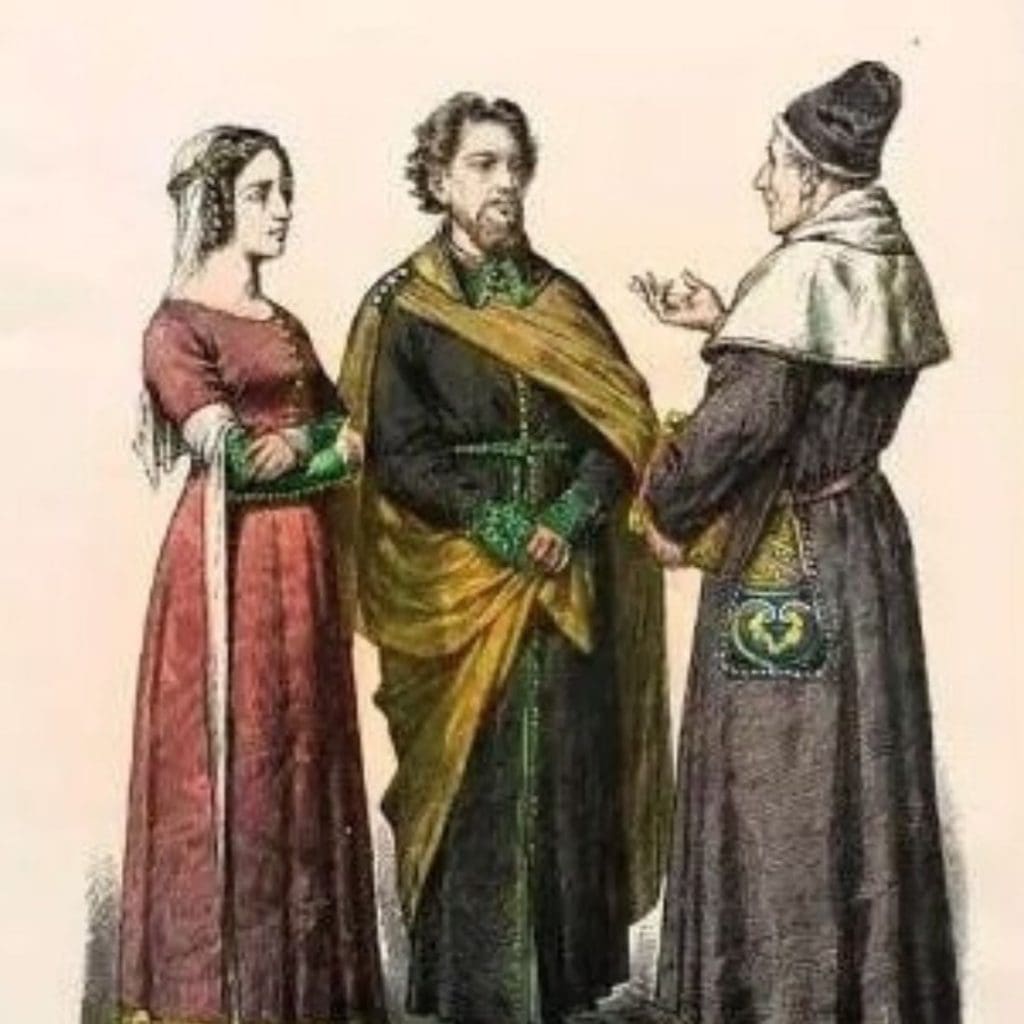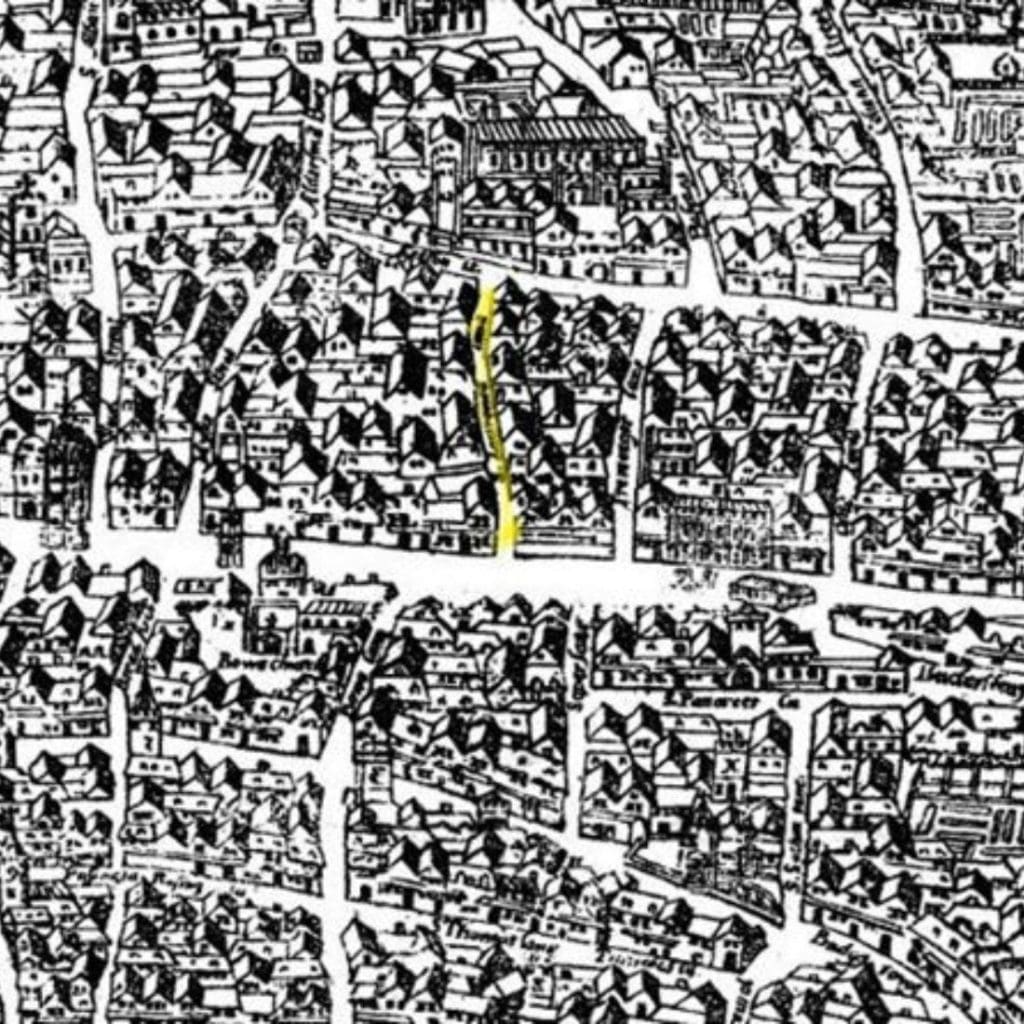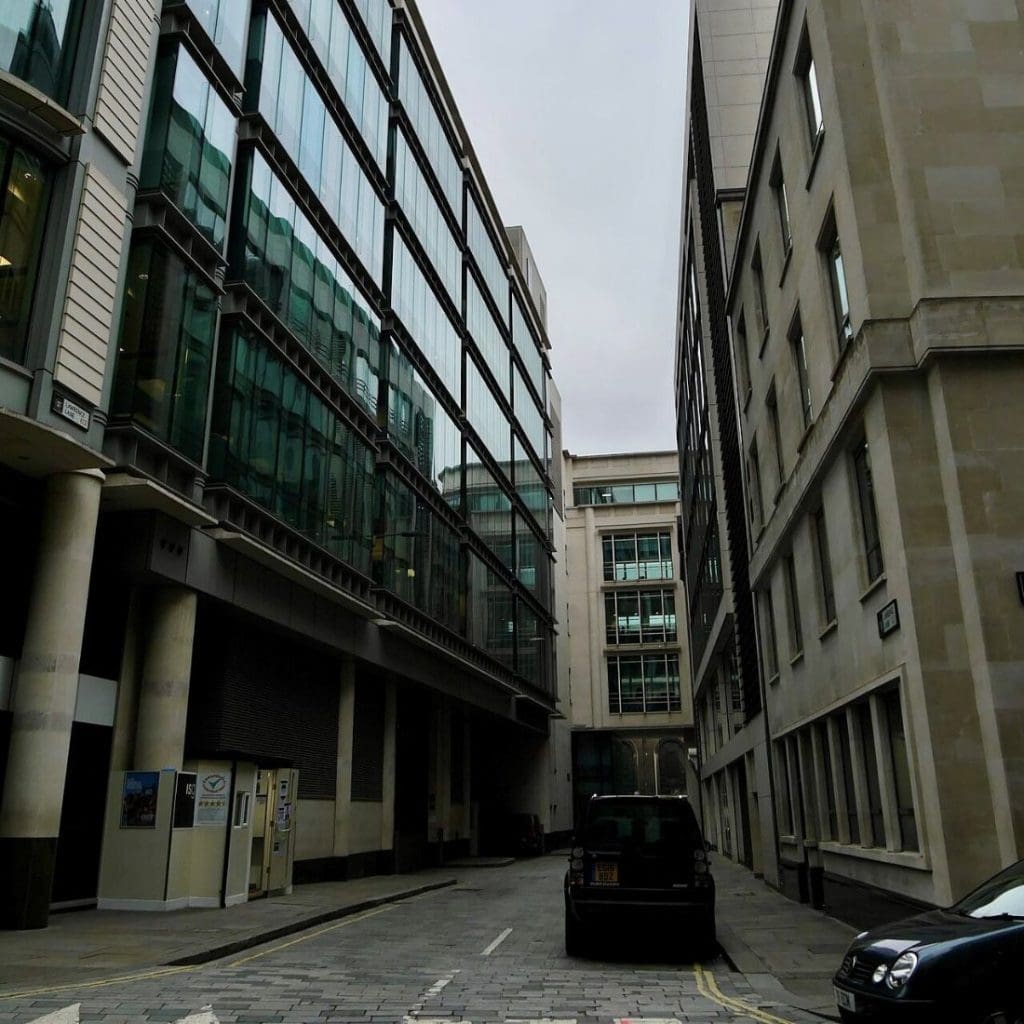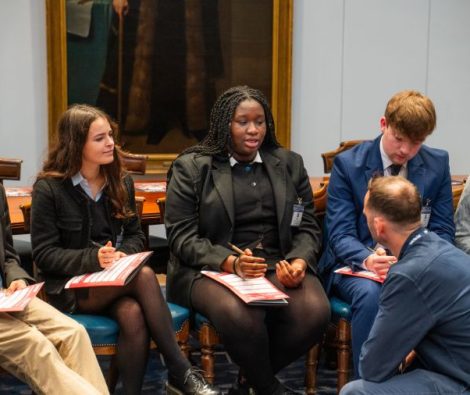HABERDASHERS' HISTORY
The origins of the Company occurred in the very early 14th Century when they are to be found as traders in small wares and caps operating under membership of the Worshipful Company of Mercers. They had transitioned from a fraternity to be a company by that time, finally sealed by a Charter of Incorporation in 1394.
In 14th Century London, haberdashers were City street retailers and merchants who sold small fashion articles such as pins, ribbons, hats, caps and a wide variety of other notions. They played a vital role in the clothing and household goods trading life of Medieval society. The term “haberdasher” had emerged in the Middle English of the early 14th Century, referring to these tradespeople.
In 1328 records in the City of London’s archives show three representatives were nominated by a small number of newly independent haberdashers by trade, emerging from the Mercers. They are described as trading haberdashers who are representing their ‘mystery in London’.; Andrew de Seecheford, Geoffrey de Caustone and Roger Madour.
It is then not until the year 1371 that we hear more. That on Saturday, 12th June 1371, Thomas Botulston, Richard Spenser, John Polstede, and Richard Marchal, were elected and sworn to ‘govern the said mistery and present defects, etc’. which means that in effect they were the first ‘recorded‘ Master/First Warden and Wardens. They created our earliest document – the Ordinances of the Haberdashers’ Fraternity of that year.
It recently came to light in the City of London Assizes of Nuisance 1369 – 1374 that more information about this early Fraternity existed. We read:
“In an original 1372 Certificate [in French] of Richard Sropshire and Thomas Fant, carpenters, Thomas atte Barnet and Richard atte Chirche, masons, to the Mayor, Recorder, and Aldermen, touching the tenements of ‘les bones gentz de la Fraternite des Haberdassheres’ in St. Laurence Lane, Old Jewry, joined to the timber of a chamber called ‘Haltepas’ held by William Waleys, ‘gurdeler’.”
St. Laurence Lane, near the Guildhall, held great importance in the procession of Mayoral Pageants. It ran north-south, connecting Cheapside at the south and Cateaton Street (labelled on the Agas map as Ketton St.) in the north. It ran parallel between Milk Street to the West and Ironmonger Lane to the east. It is drawn correctly on the Agas map and is labelled as St. Laurence Lane.
They go on to report that –
“a door (buys) of the haberdashers’ tenement is hung on hinges (crokes) affixed to the timber of William’s tenement, and that it ought to be removed and re-hung upon hinges in the haberdashers’ tenement.
Thomas Botulston (First Master/Prime Warden), John Grafton and Henry Northfolke appear on behalf of the fraternity, but can show no cause why the door of their tenement should hang on hinges (cardines) on William’s timber. It is therefore adjudged that it be removed and re-hung on their own timber, and that they enter and leave by it as formerly.”
The Angelized-French term “lez bones gentz” has been found before and means ‘the good gentlemen’. For instance – it is used as a title of a paper by Jean Imray (the former Mercers’ Company Archivist) in the 1960s – Jean Imray, ‘Les Bones Gentes de la Mercerye de Londres’: A Study of the Membership of the Medieval Mercers’ Company’ (London, 1969).
It adds to our Ordinances on 1371 and also to the circumstances of our first Master (or perhaps Prime Warden) Thomas Botulston. It seems that the tenement the Fraternity occupied was being used as an office for the fraternity’s records keeping and probably for the Wardens to meet. It is otherwise known that general gatherings of all members were in the Old St Pauls’ side chapel to St Catherine of Alexandria. In fact quite a few trading haberdashers lived in St Faith the Virgin, which is the parish next to St Pauls. Also in the 16th Century several Haberdashers were members of the Jesus Guild of St Pauls – and a number of these were listed as Wardens of the Fraternity.
Finally in 1389, to seal our association to the cult of St Catherine of Alexandria, we read in City records that two Wardens of the St Catherine’s Fraternity in that year are known to be haberdashers by trade.
While St. Laurence Lane (originally named for its close proximity to St Lawrence Jewry Church) does survive in modern London, it has been significantly shortened: the north and south ends are now culs-de-sac and the lane no longer serves as a passage to the Guildhall.
After the Great Fire of London, King Street (built between Ironmonger Lane and St. Laurence Lane) and Queen Street were constructed as a thoroughfare between the Thames and the Guildhall, effectively replacing St. Laurence Lane as the main passage to the Guildhall.
Between our Ordinances of 1371, the commissioning of our first Coat of Arms in 1446 and our subsequent Incorporation as a Company in 1448, members of our Fraternity was engaged in the supply, manufacture and retailing of a wide range of goods both for fashion and lifestyle use, this even included right from the start the supply of a wide variety of caps and hats.
The best example of the stock of one of our members’ shop wares with their values in this early period is of Thomas Trewe, haberdasher of London. His shop was in the Parish of St. Ewen, in the Ward of Farndone Within, and this list was recorded in the month of July in the second year of the reign of King Richard the Second, 1378:
Two dozens of laces of red leather, value 8d
One gross of poynts (tagged laces) of red leather, 18d.
One dozen of cradilbowes (unknown woollen item), made of wool and flax, 18d.
3 cradilbowes, made of wool and flax, 3d.
One dozen of caps, one half of which are of red colour, and the other half green, 2s. 8d.
One dozen of white caps, called “nightcappes” 2s. 3d.
Two dozens of woollen caps of divers colours, 16s.
Six caps of black wool, 4s.
Five caps of blue colour, and one cap of russet, 2s. 6d.
Five children’s caps, red and blue, 2s. 1d.
One dozen of black hures (shaggy cap), 4s.
One black hure, 4d.
Two hair camises (light coats made of camlet), 12d.
One red cap, 7d.;
One other cap of russet, 7d.
One hat of russet, 6d.
One white hat, 3d.
Two papers covered with red leather, 12d.
Two other papers, one of them covered with black leather, and the other with red, 8d.
One purse, called “Hamondeys” of sea-green colour, 6d.
Four pairs of spurs, 2s.
One double chain of iron, 10d.
One other iron chain, 6d.
One wooden gaming-table, with a set of men, 6d.
Two permis (jewel cases), 2s.
One cloth painted with Him Crucified, and other figures, 2s. 4d.
Eight white chains of iron for ferrettes, 8d.
One flekage (fly cage) of wood, 3d.
One set of beads of geet (jet), 6d.
One other set of beads of black alabaster, 4d.
Three sets of beads of wood, 3d.
Two pairs of pencases, with horns (ink horns), 8d.
One pair of children’s boots of white woollen cloth, 2d.
One osculatory, called a “Paxbred,” (religious tablet) 3d.
Two sets of wooden beads, called “knottes,” 4d.
Four articles called “kombes,” of box-wood, 4d.
Two wooden boxes, 3d.
Two wooden piper quernes (pepper mills), 3d.
Two pounds of linen thread, green and blue, 2s.
Two wooden cosynis (cushions with wooden frames), 2d.
Six purses of red leather, 4d.
Four eyeglasses (spectacles), 2d.
Eighteen horns, called “inkehornes,” 18d.
Two pencases, 6d.
One black girdle of woollen thread, 2d.
Thirteen quires of paper, 6s. 8d.
Other paper, damaged, 6d.
One hat of russet, 6d.
Two wooden coffins (coffers), 8d.
Two gaming-tables, with the men, 16d.
One wooden block for shaping caps, 2d.
Six skins of parchment, called soylepeles, 6d.
One wooden whistle, 2d.
Seven leaves of paper, 1d.
Three pieces of whippecorde, 3d.
So today what remains of the world of the 14th Century in which our early Fraternity and its members thrived and began to expand their activities on through the centuries to the Livery Company that we know today? Well the traces are to be found in archival records that I have tried to demonstrate here and also in the topographical layout of the City of London with its reflection of its medieval origins to be found in its street names and in many cases in their original locations. In that regard there is a hint of St Laurence’s Lane to be seen leading off Gresham Street today.






